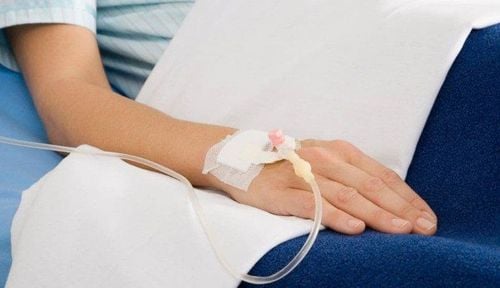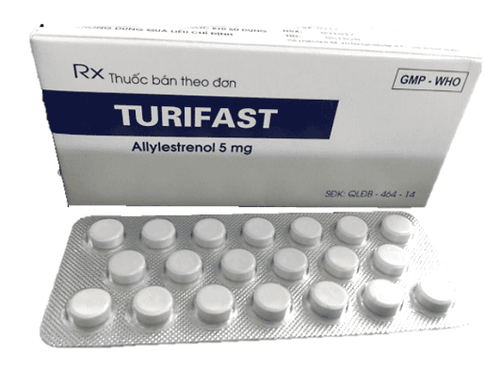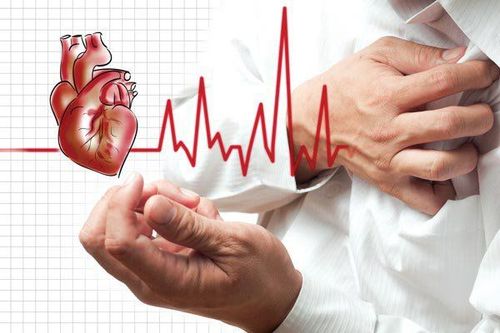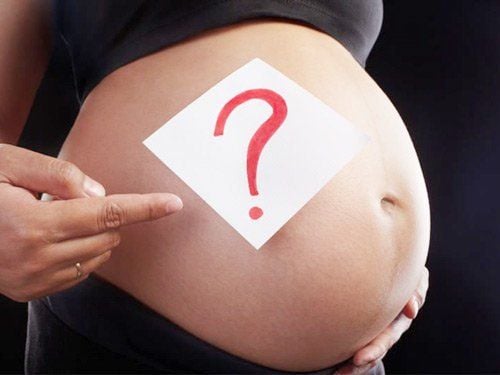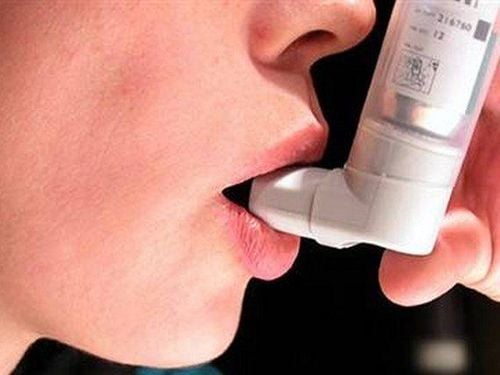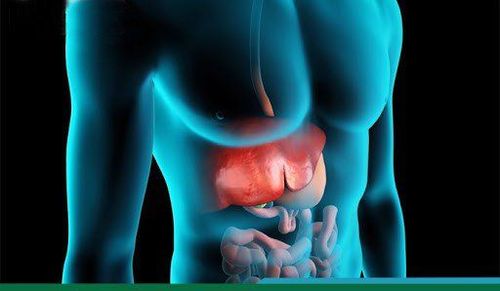This is an automatically translated article.
The article was professionally consulted by resident Doctor Duong Van Sy - Resident Doctor of Pediatrics - Department of Pediatrics - Neonatology - Vinmec Hai Phong International General Hospital. Uncle has 09 years of experience in the field of Pediatrics with strengths in examination, consultation and treatment of diseases in children; Emergency resuscitation, anti-poisoning for infants and children.Neonatal acute respiratory failure is a serious disease that can cause death, especially in premature infants. Early diagnosis is a prerequisite in the treatment of neonatal respiratory failure. The diagnosis includes the definitive diagnosis of respiratory failure and the differential diagnosis of the cause of neonatal respiratory failure.
1. What is acute respiratory failure in infants?
Neonatal acute respiratory distress syndrome (inner membrane disease) is a lung dysfunction (disordered ability to exchange gases between alveoli and capillaries), leading to hypoxia, hypercapnia, no longer able to maintain PaO2, PaCO2 and pH at acceptable levels.
Acute respiratory failure is a common syndrome in the neonatal period, especially in the first days of birth. Premature infants have a higher risk of acute respiratory failure than term infants. It is also the leading cause of infant death.
About the cause, in the lungs of normal people, inside the alveoli there is a surfactant that is responsible for maintaining the stability of the alveoli, preventing the alveoli from collapsing. This substance appears relatively at 20 weeks, coats the inner wall of the alveoli and is present in the amniotic fluid at 28 - 36 weeks. In premature babies, because the lungs are not fully mature, the surfactant will be deficient. . This leads to alveolar collapse, reduced alveolar surface area available for gas exchange, respiratory failure, and even death in premature infants. In addition to preterm birth, there are a number of factors that increase the risk of acute respiratory failure in newborns such as: C-section, family history of respiratory failure, multiple pregnancy, mother with diabetes, trauma to the perinatal period. delivery (asphyxia, antepartum hemorrhage), reduced blood supply to pregnancy,...
If the newborn has mild respiratory failure and is properly treated, after about 72 hours, the symptoms of the disease will appear. diminished and the child's life could be saved. If the disease is severe, the child will have cyanosis, severe shortness of breath, low blood pressure, hypothermia, and possibly death within a few hours. However, in children who are saved, after recovering from illness, children may still experience some sequelae such as cerebral hypoxia, cerebral hemorrhage, hypoglycemia,...
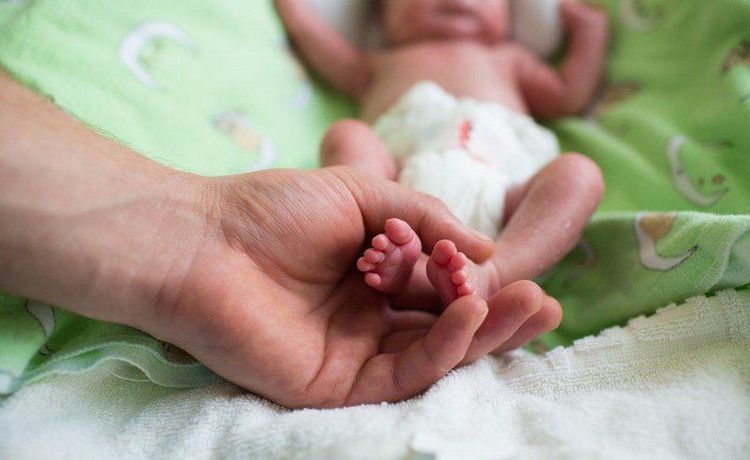
Trẻ sinh non có nguy cơ bị suy hô hấp cấp cao hơn
2. Diagnosis of acute respiratory failure in infants
2.1 Ask for medical history Gestational age: Premature, full term or old term. Respiratory problems are common in premature babies such as: immature lungs, lack of surfactant causing endothelial disease; Weak resistance, susceptible to infections such as pneumonia; Nervous system is not yet complete, easy to experience apnea. How to give birth: Caesarean section, aspiration or vaginal delivery. Infants born by caesarean section often have delayed absorption of alveolar fluid, causing transient episodes of tachypnea; Child's condition at birth: Having obstetric trauma, asphyxia, performing postnatal resuscitation interventions, skin impregnated with meconium, cold, stress or other diseases, etc., are prone to some diseases. on breathing; Mother's condition during pregnancy: Diabetic mother will affect the synthesis of surfactant, causing acute respiratory failure in newborns; Mother's condition at birth: If the mother has a fever before giving birth, the membranes break early, the amniotic fluid is cloudy, has a bad smell, etc., the child is prone to pneumonia.

Phương pháp sinh con có thể ảnh hưởng đến bệnh suy hô hấp
2.2 Clinical examination Change in breathing rate: The child breathes fast more than 60 times/minute or breathe slowly less than 20 times/minute; have apnea of more than 20 seconds or apnea of less than 20 seconds with a heart rate decrease of less than 100 beats/minute; Signs of exertion of breathing: Chest indrawing, rising and falling of the nostrils, groaning (exhale); Cyanosis: Cyanosis around the lips, extremities or the whole body; Cardiovascular: Initially tachycardia, then bradycardia, eventually arrhythmia or cardiac arrest; Nervous system: There are mild to severe manifestations of consciousness, pupils, muscle strength such as struggling, abstaining from suckling, decreased muscle tone, loss of reflexes, convulsions, lethargy, coma,...; Renal: Acute renal failure, oliguria or anuria; Measure and monitor blood oxygen saturation (SaO2). Diagnosis of respiratory failure when the SaO2 index is less than 90%.
2.3 Perform necessary tests Hematology, blood culture, CRP if neonatal sepsis is suspected; Chest X-ray to detect comorbidities or causes of acute respiratory failure in infants such as pleural effusion, pneumothorax, pneumonia, foreign body in the airways, check the placement of the endocardium trachea correct,...; Arterial blood gases apply when respiratory failure fails with oxygen.
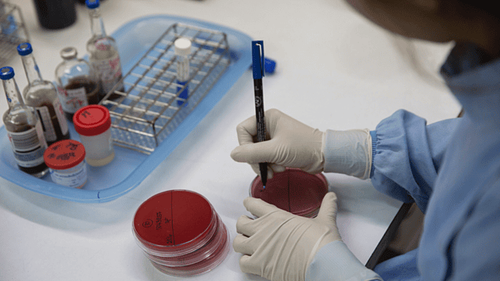
Kỹ thuật cấy máu
2.4 Confirm diagnosis of acute respiratory failure in neonates
Newborns are diagnosed with acute respiratory failure when arterial blood gas results are: PaO2 < 50 - 60 mmHg and/or PaCO 2 > 60 mmHg and pH < 7.25.
2.5 Differential diagnosis of the cause of respiratory failure in newborns
Rapid diagnosis of dangerous diseases:
Pneumothorax: Children present with unilateral chest distension with decreased bronchopneumonia, need to diagnose by transilumination and chest X-ray; Back nose ; Newborns have symptoms of difficulty breathing when suckling, when crying, the skin is pink, not crying, the skin is purple. Diagnosis is by placing bilateral nasal catheters that will not be inserted; Diaphragmatic hernia: The child has signs of concave abdomen, decreased lung sounds on one side and the heart is pushed to the opposite side. The appropriate diagnostic method is chest X-ray; Esophageal atrophy with esophagitis - tracheal fistula: Manifestation is a baby with a lot of foam in the nose and mouth. The diagnosis is based on signs when an oral-gastric catheter cannot be inserted for a given length.
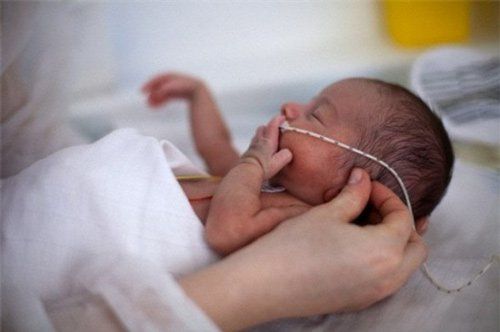
Suy hô hấp ở trẻ sơ sinh cần được chẩn đoán chính xác
Differential diagnosis of common causes:
Inner membrane disease: Children show signs of acute respiratory failure soon after birth, often seen in premature babies, born asphyxiated; Meconium inhalation : Newborns show signs of chest distension, meconium staining of skin, umbilical cord, and nails. This condition is common in children with a history of obstetric asphyxia, blue amniotic fluid, meconium in the amniotic fluid; Pneumonia: Newborns with pneumonia have clinical manifestations of fever or hypothermia, premature jaundice. Children with pneumonia are often caused by premature rupture of membranes, foul-smelling amniotic fluid, or an infection by the mother; Asphyxiation, pneumonia due to aspiration of amniotic fluid and blood: Children have signs of respiratory failure and neurological signs; common in babies with perinatal asphyxia and there are cases of respiratory support right after birth; Transient tachypnea: Children breathe fast, moan lightly, rarely cause severe respiratory failure. This condition is common in babies born by cesarean section, late clamping the umbilical cord; Apnea episodes in preterm infants: The baby has apnea lasting more than 20 seconds with slow pulse less than 100 times/minute; Congenital heart: The clinical sign is respiratory failure less than 4 hours after birth, rarely occurs.
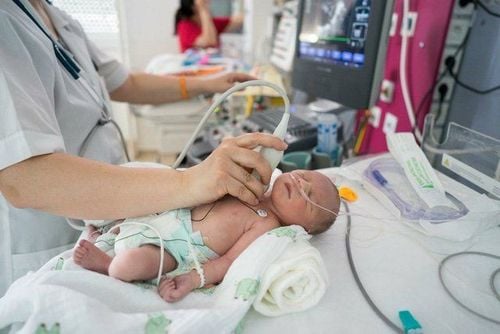
Bệnh tim bẩm sinh có thể gây suy hô hấp ở trẻ
Neonatal acute respiratory failure is a serious and dangerous disease with a high risk of death. Therefore, when a child has warning signs of illness, parents should immediately take the child to a doctor for examination and treatment. In particular, because the main cause of respiratory distress syndrome in newborns is premature birth, to prevent the disease, mothers need to try to reduce the risk of premature birth, maintain good habits such as not drinking alcohol, smoking. leaves during pregnancy, have appropriate nutrition, check and monitor pregnancy regularly.
Respiratory distress syndrome in premature infants is often treated with the technique of supplementing with surfactant compounds. As before, medicine often uses the technique of endotracheal intubation with Surfactant and mechanical ventilation for children. Today, Surfactant pump technique for treatment of neonatal respiratory failure is less invasive and increasingly widely used. Currently, there are many different methods and techniques of surfactant injection, which should be considered on a case-by-case basis.
Surfactant pump technique to treat respiratory failure in newborns has been implemented at Vinmec International General Hospital. The benefits of this therapy are: improved lung ventilation, increased blood oxygenation, reduced frequency of air leaks (complications with pneumothorax, alveolar congestion...), reduced mortality and morbidity. for kids...
As a key area of Vinmec Medical system, Pediatrics Department always brings satisfaction to customers and is highly appreciated by industry experts with:
Gathering a team of leading pediatricians: including leading experts with high professional qualifications (professors, associate professors, doctorates, masters), experienced, worked at major hospitals such as Bach Mai, 108.. Doctors All are well-trained, professional, with a mind - range, understanding young psychology. In addition to domestic pediatric specialists, the Department of Pediatrics also has the participation of foreign experts (Japan, Singapore, Australia, USA) who are always pioneers in applying the latest and most effective treatment regimens. . Comprehensive services: In the field of Pediatrics, Vinmec provides a series of continuous medical examination and treatment services from Newborn to Pediatric and Vaccine,... according to international standards to help parents take care of their baby's health from birth to childhood. from birth to adulthood Specialized techniques: Vinmec has successfully deployed many specialized techniques to make the treatment of difficult diseases in Pediatrics more effective: neurosurgery - skull surgery, stem cell transplantation. blood in cancer treatment. Professional care: In addition to understanding children's psychology, Vinmec also pays special attention to the children's play space, helping them to have fun and get used to the hospital's environment, cooperate in treatment, improve the efficiency of medical treatment. To register for examination and treatment with Pediatricians at Vinmec International General Hospital, please click the "Contact Us" button on the website or register online HERE.
MORE:
Acute respiratory failure in premature infants: Risks and complications Respiratory distress symptoms in newborns Differential diagnosis of causes of acute respiratory failure in infants





